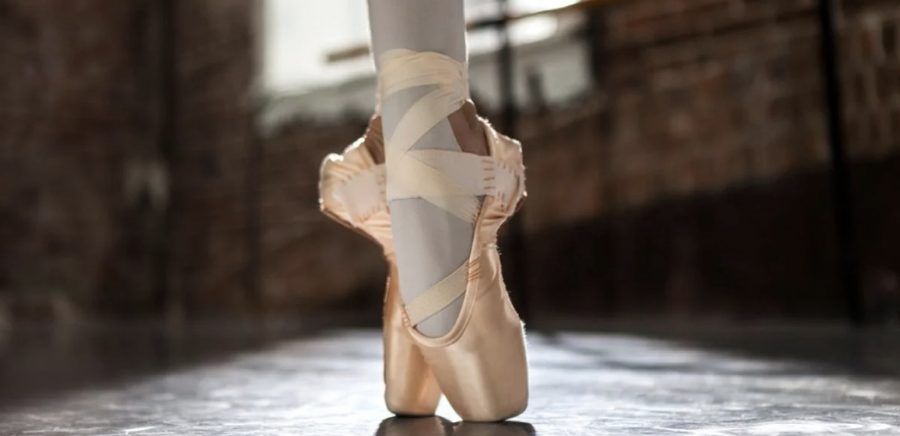Behind the Barre
The world of dance has many misconceptions, but the truth is only known to some.
The effort behind performing in pointe shoes is more that meets the eye.
November 29, 2021
The misconception of dance as a simple activity done while wearing a pink tutu is far from the truth. Dance both doubles as an art form and a sport, which only emphasizes the intensity of the art. The creativity and the physical exertion prove the intensity of dance. The strenuous requirements of dance are often neglected by the stereotypes that non-dancers hold about the sport.
The high intensity of dance is vital to not only being a strong dancer but a safe dancer as well. The out-of-breath feeling can be unsafe if not properly trained, especially in the dancing world. Fainting and difficulty breathing are dangerous side-effects of having weak stamina as a dancer.
Competitive dancers often have an abundance of routines to complete in one weekend, and they can feel fatigued and even ill from these routines. The brief time given to change costumes between these routines can take away from time to catch one’s breath, which emphasizes the importance of having a good stamina.
Most people likely believe that there are only a handful of routines per competitive dancer. The average number of routines for an advanced competitive dancer can be upwards of 20 routines, consisting of difficult techniques, a need for stamina, and of course, the memorization of choreography.
Flexibility is a significant skill to have in the world of dance, but contrary to popular belief, it is not everything a good dancer needs. Strong stamina is required to manage the intensity of dance routines because of the chance that some routines last five minutes or longer. The use of strength is also key for gaining height in leaps, lifts, moving the props, and having muscles for balance. Intelligence in dance is vital for recollecting the thousands of terms and executions of dance moves.
Performance is arguably the most entertaining attribute to have as a dancer. The emotion told in one’s expression and the art of storytelling captivate the audience sometimes more than special tricks. The audience’s intrigue eliminates any possible boredom.
The “snowball effect” applies to being a talented dancer and can affect a dancer greatly, for better or worse. The mental pressure of succeeding at competitions creates difficult feelings of stress for dancers to work through. Meanwhile, the physical pressure of mastering the art itself can cause injury.
A sore muscle is not the only injury dancers face. Bone fractures, concussions, bruises, and cuts are all prevalent in the world of dance. The consistent appearance of injuries encourages dancers to proceed with caution while performing.
Dance also has a higher cost than most other sports, which many do not realize. The price of costumes, technique equipment, shoes, hair and makeup materials, hotel fees, travel fees, and even prop transportation costs can add up when one is a competitive dancer. The average cost of being a competition dancer can be as high as 10,000 dollars per dancer. The annual cost of dance can have a heavy expense depending on how many years one competitively competes.
The cost of dance does not stop the dedication of dancers, however. For example, the average competitive dancer spends around 30 hours per week dancing regardless of level. These hours involve technique classes to improve talent, rehearsals, private lessons, and far more. The common phrase of “practice makes perfect” is seen throughout all of this work and time that dancers spend and is reflected through the dancer’s talent.
The long classes and hours spent practicing prove that dance is an activity that emphasizes building ability over time. While some are naturally inclined in the world of dance, others relentlessly persevere to improve at their craft. The dedication from those who need to work harder to match those with natural abilities not only advances their skill but causes them to be a better dancer as well.
The teachers of dance are faced with pressure amongst the dancers as well. Dance teachers choreograph loads of routines, prep them for competitions, and train their dancers constantly. The average 46 hours of work per week put into their job can inspire feelings of stress in the teacher as well.
In short, the world of dance is not what people think it is. The art form requires far more ability and training than what meets the eye.












